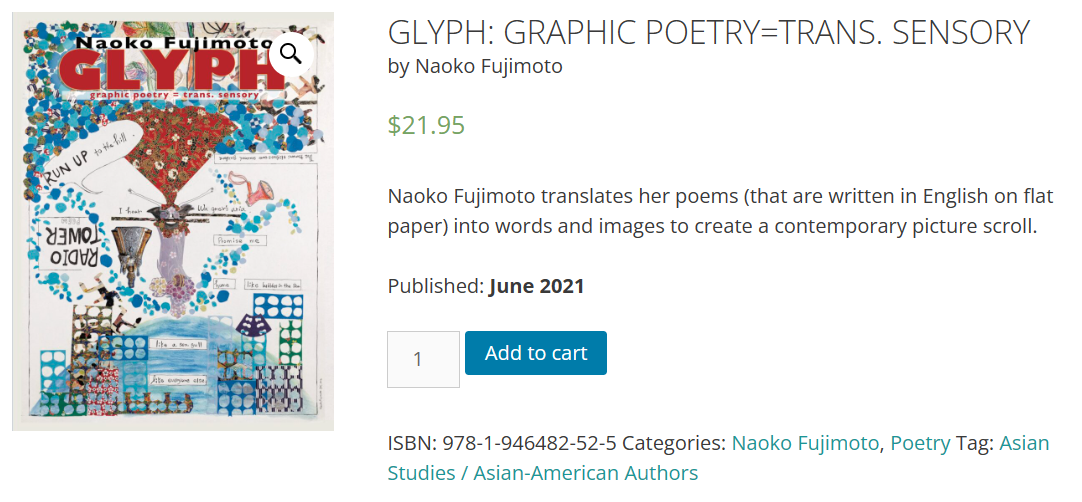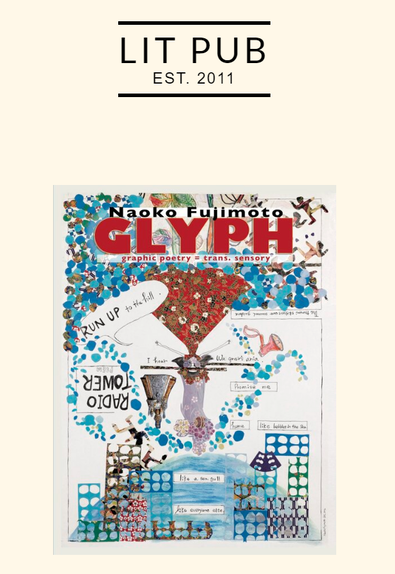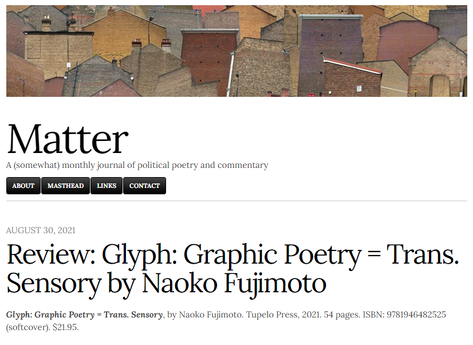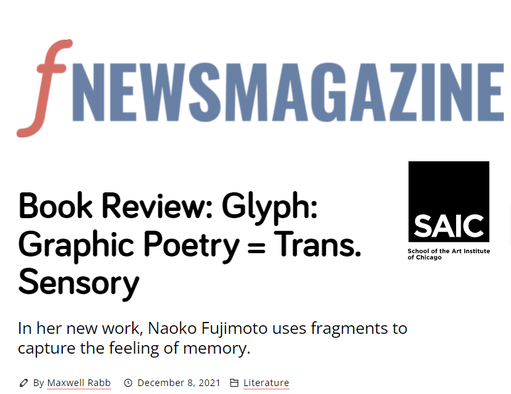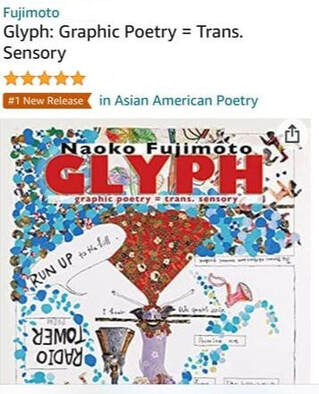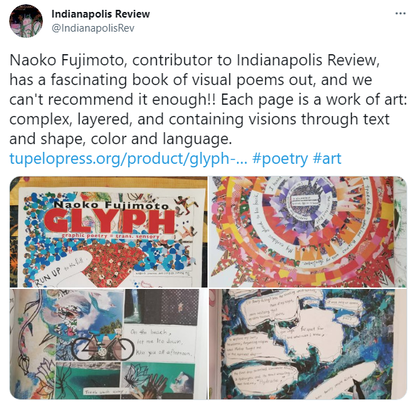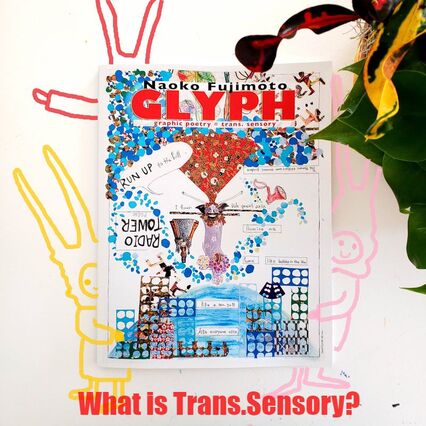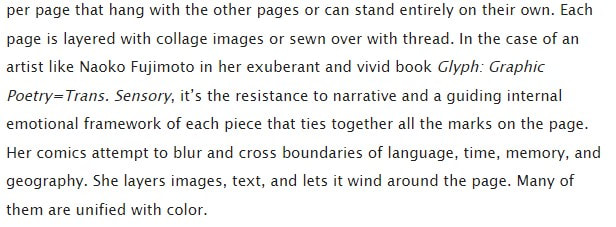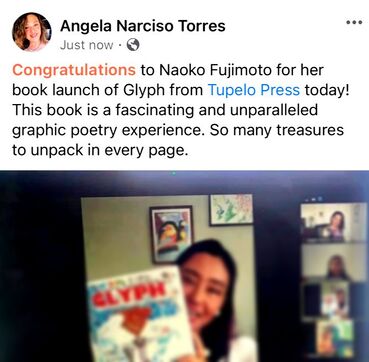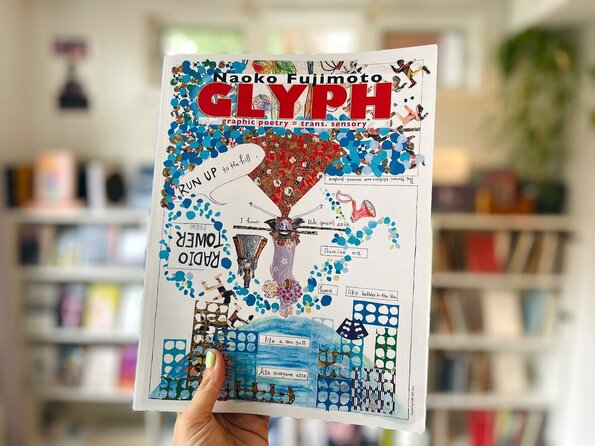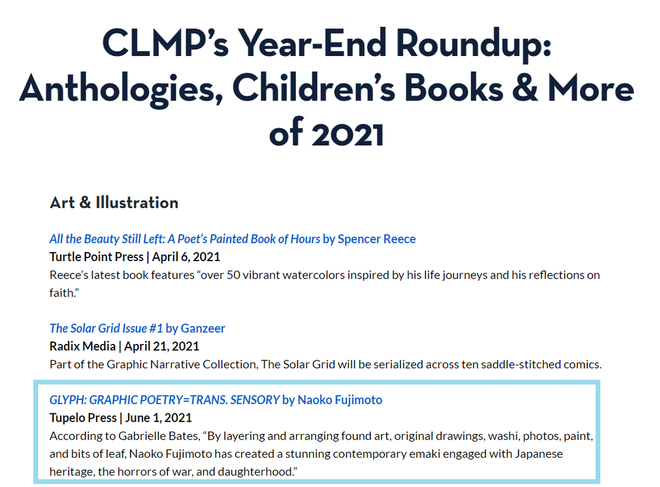Glyph is a wonder. Wholly original, it's visually dazzling and textually poignant. A stunner!" - Ralph Hamilton, author of Teaching a Man to Unstick His Tail
The full-color production of the book is beautiful, and because it's at a magazine-size of 8.5" x 11," the words are readable and the mixed media details are clearly discernible. Whether or not you have ever entered the world of the graphic poem, Naoko Fujimoto's Glyph is an essential addition to your poetry collection." - Aaron Caycedo-Kimura, author of Ubasute
How do you explain how these blurred text-worlds/world-texts make room for the smallest voice—a snail's—at the same time that they accordion-pleat long histories of war and radioactive fallout?" - Luisa A. Igloria, Poet Laureate of the Commonwealth of Virginia 2020-22
This kind of poetry has a hard time in the world. The ideal thing would be to have pieces like this hanging on the wall in your apartment, where you could see 'em, day after day, for a long time. If they were hanging in a gallery, you'd miss everything. - Anthony Madrid, author of Try Never
The fragmentary scraps of words and art on its textured pages marry in the most astounding ways." - Nancy Botkin, author of Parts That Were Once Whole
I am enthralled and yes--trans.ported-- as I continue to leaf through "Glyph." The book is so rich, exquisitely so; revelatory about poetry-making/art-making, and groundbreaking (good word because of the unearthing of history aspect): It breaks the mold of language-based collage." - Carol Eding
GLYPH: A VERBO-VISUAL EXPERIENCE: Naoko Fujimoto’s GLYPH has taught me to read with all my senses, each visual poem an invitation to reach deep into its depth and swim in the language of its making. It took me weeks to get through this book because I wanted to make sure that none of the beauty each poem held escaped me. In these pages, Fujimoto writes her thinking and draws and collages her emotions. The more we “see” what’s on the page, the more we want to touch it; the more we read the words, the more we remember how to feel. Open this book and begin a visual/textual journey you’ll never want to end." - Octavio Quintanilla, San Antonio Poet Laureate 2018 - 2020
This is a reading experience like no other. Poetry in the language of color, line, and shape. Poetry in the language of comics and collage. I just keep looking and re-looking, reading and re-reading." - Kelcey Parker Ervick, author of The Bitter Life of Božena Němcová
Wow! Glyph is a singular achievement that defines genre categorization." - Anne McGrath, Best American Essays 2020 Notable
This playful assortment of materials offers a dramatic juxtaposition between the bright, colorful compositions and the dark, somber, thought-provoking lines of poetry which dance across each page." - Frances Cannon, author of Walter Benjamin: Reimagined
This is clearly a masterful blend of text and image! Naoko's instincts are amazing." - Gail Goepfert, author of Tapping Roots
Naoko Fujimoto's Glyph is the first book of visual poetry that I've read that doesn't follow a narrative. The poems follow certain themes -- the poet's grandfather's experience during the war, her life in the Philippines, and in the US." - Celia Bland, author of Cherokee Road Kill
Naoko is an incredibly talented and generous artist." - Elizabeth O’Connell-Thompson, the Media Associate for Poetry Foundation.
So excited to receive Naoko Fujimoto's graphic poetry collection Glyph from Tupelo Press! I'm already lost in the pages..." - Donna Vorreyer, author of To Everything There Is
Each page is like a little treasure map." - John McCarthy, author of Scared Violent Like Horses
Fujimoto is so highly skilled at both the art and the writing that each of them would work on their own here, but together--magic!" - Gretchen Primack, author of Kind
Beautifully disorienting and transformative. I'm astonished at this book." - Ann Hudson, author of The Armillary Sphere
Every time I turn to it, I notice something I did not see before." - Sherry Smith
This book is a tour de force of artistry, so inspiring." - Beth McDermott, author of How to Leave a Farmhouse
